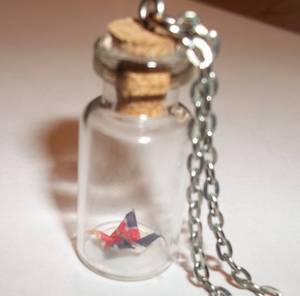First, a definition of Origami-maybe
I say “maybe” because it seems that a definition of origami has been the subject of much discussion among origami enthusiasts. So, I’ll venture my own: Origami is the art-and science-of creating objects using folded paper.
Where did origami come from?
As with the definition, there have been many theories advanced about how origami started. No one seems to have the full story, but it does seem that origami was being used almost 1,000 years ago in Japan, which is where it seems to have originated. Even then, it may not have been called “origami,” and it may not have been the “hobby” it is today. One of the most interesting stories I came across was that the term originally referred to either a certificate of authenticity or a certificate of achievement. Special folding techniques were used to make these certificates hard to duplicate.
Materials
The main-and in some cases the only-material used is paper. There are special papers made just for origami. These can be plain, with a solid color on one side, or fancy, as with the newer “holographic” papers. The range of origami papers is expanding all the time.
But you don’t have to use special origami paper. Anything that’s thin enough to fold several times could be used. Possibilities include wrapping paper, crepe paper, and magazine or catalog pages. Most folding instructions call for square paper, so if you’re using something other than origami paper you need to make sure your sheets are absolutely square.
But there are now designs using rectangular paper as well. One of the first and most popular rectangular papers used for origami was the dollar bill. It may seem like a waste to use money for origami, but think of it this way: You can always unfold it and spend it!
The process of folding
There’s been a lot of discussion about whether folded objects can be assembled using other techniques, like cutting, gluing, or taping. Purists, I think, would prefer to use only folding.
The first few folds are the simplest. They’re also the easiest to learn, because they tend to be “standardized” into several different bases. Depending on the object you’re making, you might start with a bird base, a waterbomb base, a fish base, or even a frog base.
Once the base is finished, the folding of the actual object begins. Some objects can be made with just a few folds; others take many folds and a lot of time. And some items are made from many folded objects joined together. For example, there are online instructions to make a Christmas tree using three folded dollar bills.
What can you make?
Probably the first object that comes to mind is the crane, symbol of peace and happiness (the Peace Garden in Hiroshima is usually filled with cranes folded by children). It’s not that hard to make, and it’s a very graceful figure. It’s also a tradition in some Japanese ceremonies. Many years ago I attended a wedding which featured an umbrella hung with 1,000 gold foil cranes made by the groom’s mother.
Obviously it’s also possible to make animals and other figures. But you can also make usable items like greeting cards, envelopes, and boxes. And one of the most complicated designs I ever did was a model of the space shuttle. I’m not an expert by any means, but I had a very good teacher for that one.
You may think that origami is a child’s craft, and certainly it can be. But there are also many adults who do origami. For some it’s just a hobby, but for others it can be an opportunity to apply their skills with mathematics or geometry. When you think about it, origami is basically a form of three-dimensional design.
And in case you aren’t convinced that it can be complicated, check out the story of a student at Carnegie Mellon University in Pittsburgh, Pennsylvania. Devin Balkcom, for his doctoral thesis in robotics, designed and built a robot that could fold paper. Why? Because he believed that it would be a way to study human hand movements and possibly duplicate them in a robot.
But what to do with the folded objects?
Well, you can always use them “as is,” as decorations for your home or an event (like the wedding I described above). I’ve also seen mobiles made of origami figures. And they could be used to dress up gift packages.
Certainly paper can be fragile-especially the thinner kind used for origami. If you’re worried about your objects getting bent or crushed, don’t use them for something that will get a lot of wear. If they just need a little protection, you can always spray them with varnish.
Origami is interesting because it combines art (design) and science (geometry). If you’d like to try something different, give origami a try. It can challenge both the logical and creative sides of your brain.
Reference:
- www.paperfolding.com/How to Make an Origami CraneInstructions for origami CD casesOrigami HistoryThe Mathematics of Paper Folding: An Interview with Robert Lang



